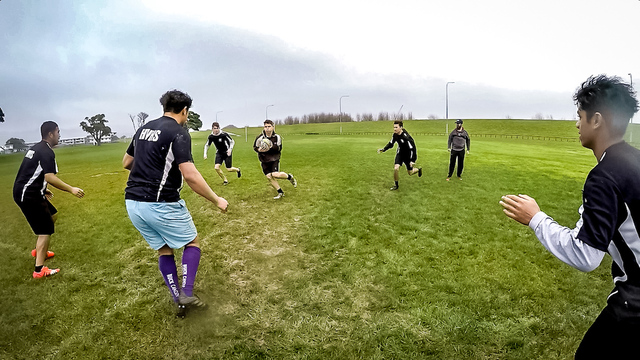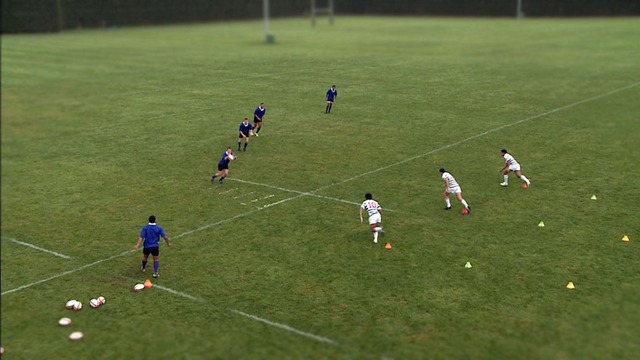Why Scotland are sending opponents homeward ‘tae think again’
It has been a long time since Scotland began to string wins against top-tier opponents together. There has been a serious drought in the Six Nations tournament, with Scotland only winning more matches than they lost, finally, in the 2017 championship.
The watershed moment was probably the 2015 World Cup, in which the Scots were only denied a worthy progression to the World Cup semi-final stage by a controversial last-minute penalty decision.
Since then, they have won 13 out of their 21 matches, and five out of their last seven under coaches Vern Cotter and Gregor Townsend. They have beaten Australia home and away and they have run the mighty All Blacks close.
Ironically, the New Zealand influence has been crucial to their success, and it probably no accident that Townsend’s role at Glasgow Warriors has now been assumed by Kiwi Dave Rennie.
Rennie had previously been head coach of the Chiefs in New Zealand, and if any team could lay claim to following the Chiefs’ lead in European competition, it would have to be the Glasgow side coached by Townsend.
Both teams could be described as being ‘comfortable in chaos’ – comfortable in situations involving sudden changes of possession, and where the play lacks the structure imposed by set-piece.
In fact, the New Zealand influence has had the effect of returning the Scottish game to its historical roots. In the last period of success during the late eighties and nineties, Scotland’s game was based on creating chaos and dissolving the control of opponents who depended on set-piece.
On one memorable occasion against Wales in 1987, Scotland coach Derrick Grant selected five natural back-rowers in the back five forwards, with Iain Paxton and Derek White shunted to lock and Finlay Calder, John Jeffrey and John Beattie behind them.
Scotland won 21-15 and according to one news report, “ran Wales into ragged disarray”.
I don’t know whether Vern Cotter knows much about Scottish rugby history, but he took it on a stage further by selecting at least two, and sometimes three natural open-side flankers in the same team – with all of Hamish Watson, John Barclay, John Hardie, Blair Cowan and Ryan Wilson available to him, and two hookers with experience at number 7 in the shape of Fraser Brown and Stuart McInally. The open-side flanker mentality generates turnovers, and turnovers create chaos.
As Gregor Townsend’s forwards coach with both Glasgow and now Scotland, Dan McFarland connected the eras together when he commented:
“I also think that it suits the Scottish legacy I grew up watching. (That) legacy… was about high tempo and being able to run the opposition off their feet. We want to play at pace, and for the forwards that means being accurate but pushing the tempo. We’re a fit team, and there are players who will run fast for a long time. We want to take advantage of that.”
The fruits of the work done by Cotter, and currently being undertaken by Townsend, were there for all to see in the final game of the autumn series against Australia. The fact that Scotland went on to win a match in which Australia had been reduced to 14 men (after the sending-off of Sekope Kepu at the end of the first half) was not surprising. That they did it by scoring eight tries and over fifty points, definitely was.
In the process, they ran Australia into “ragged disarray”, exploiting every opportunity to quicken the tempo and counter-attack off a change of possession. It is very much a New Zealand formula, and one which suits Scotland’s rugby history and the talents of their current crop of players, admirably.
In the course of the game, Scotland scored five tries off a mixture of forced fumbles (3), turnover (1) and tapped penalty (1), and it only cost them a total of 12 phases to do it – a very economic way of keeping the scoreboard ticking over!
They took quick tapped penalties and quick lineouts and they were prepared to run from deep, through extended exit sequences to establish their foot print on the match.
After a quick lineout throw taken by Finn Russell, the ball was moved across field and then back again through a combination of backs and forwards:
On this one phase alone, there are two important passes made by forwards; one by #5 Johnny Gray to link with the main playmaker Russell in the second line of attack in midfield, the second by #2 Stuart McInally to release the four attackers in space in the far 15m corridor.
The whole exit process included 11 passes (four by forwards) and three rucks before Scotland decided to “exit” from the halfway line.
Scotland built their momentum by splitting into an attacking formation you would normally expect to see much further upfield. Two forwards (#’s 1 and 6) drop back into a midfield pod with Gray, while two others (#’s 2 and 7) slide off into the 15 metre zone to support the outside backs.
In this way they are able to exploit an Australian defence where the wing has stayed deep expecting the kick (the last defender in the line is Wallaby #12 Samu Kerevi).
This was a consistent theme throughout the game from exit positions:
After Zander Fagerson picks up the ball from an Australian kick-off, Scotland run one more phase before recognizing that the far-side wing has again dropped into the backfield. They can even afford for a pass to hit the deck in the process of exploiting that space.
The final example of creating a ‘chaos’ (or confusion of expectation) in which you are more comfortable than your opponent, occurred in the 55th minute:
Finn Russell sets up as if to angle a kick into the corner for a lineout drive, but notices out of the corner of his eye that 12 Australians have shifted beyond the near post towards touch, leaving only two defenders in one half of the field. A two-on-two in acres of space is a chaotic scenario which definitely tilts the balance in favour of Scotland! Scotland #13 Huw Jones duly converted the opportunity.
Summary
The influence of New Zealand coaching has enabled Scottish rugby to rediscover its roots, paradoxically.
With Vern Cotter at the helm, Scotland began to find their historical feet, creating a fruitful chaos on the field, selecting teams to play off changes of possession and quicken the tempo at every opportunity.
With Gregor Townsend now succeeding Cotter as head coach of the national side and the Chiefs’ Dave Rennie in place at Glasgow, it is very probable that this trend will continue.
But the themes of being willing and able to deliver the unexpected, involve forwards in handling plays and score with economy (within three or fewer phases) go well beyond Scotland, and are very significant for coaching in both hemispheres.








.jpg)


.jpg)










